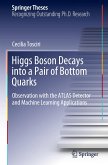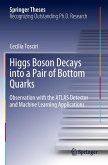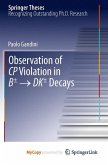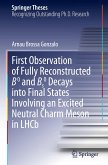We searched for decays of bottom and bottom-strange mesons into pairs of charged light hadrons (pions or kaons) in a sample corresponding to 180 inverse picobarns of proton-antiproton collisions at a center of mass energy of 1.96 TeV, collected by the upgraded Collider Detector at the Fermilab Tevatron. A total signal of approximately 900 events was reconstructed, and the relative branching fractions of each decay mode were determined with a likelihood fit. We report the first observation of the decay of a bottom-strange meson into two charged kaons. We measured the direct CP-violating asymmetry in the decay of a bottom meson into a charged pion and a kaon in agreement with world average values. These measurements are performed for the first time in a hadron collider. No evidence for other modes was found, and we set upper limits to the decay rates of rarer modes. This work is the author's PhD thesis and has been published in Physical Review Letters, vol. 97, issue 21 (PRL 97, 211802, (2006))








